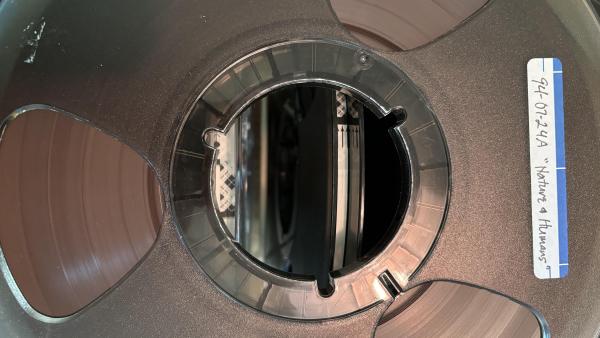
Audio engineers have recipes, too. When Steve requested we include a clip from a 1995 interview with the late biologist Roger Payne on this week’s show,”Listening to Whales,” it meant going deep into the "TTBOOK" archive. Down twelve flights of stairs, roaming the utility tunnels of Vilas Hall where our mid-90’s reel-to-reel tapes have been hidden away for decades.
When tape of that vintage has been sitting in dank, dark concrete hallways for years, you can’t just pull it out of the box, string it up on the machine and hit play. The accumulated moisture causes the tape to stick and the precious iron oxide that contains the audio would begin to flake off like metallic dandruff. So we lovingly and literally bake the tape in a vegetable dehydrator. The newly warmed radio from 1995 will then play, for a limited time, with minimal damage.
How to Bake a TTBOOK Tape
Remove from packaging
Set oven for 130°F
Place item on the middle rack
Bake 4-6 hours
Remove carefully from oven
Let cool for 10 minutes
For best results, play within two weeks
One of the weirdest facts about reel-to-reel tape is how the technology developed over time. Used widely and successfully since the 50’s, American tape manufacturers by the early 80’s had changed their production methods resulting in tape that slowly accumulates moisture like an audio sponge. No one noticed this until years later, thus the need for baking.
The bad news? The first decade of "To the Best of Our Knowledge" was produced exclusively in this analog era, thousands of interviews slowly turning into brown iron oxide gum. The good news? We recently pulled all of these ‘90s master tapes out from our Vilas Hall basement to transfer them to a digital format for permanent safekeeping. It’s an exciting project with an exciting partner that I’m biting my tongue to keep secret. More on that restoration in a coming newsletter, I promise you.
In the meantime, enjoy Steve’s interview with Roger Payne, three decades old and still making us dream of swimming with humpback whales.
– Joe
